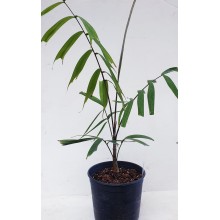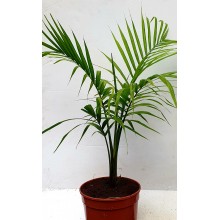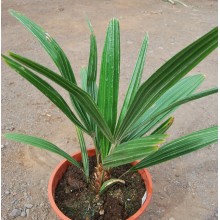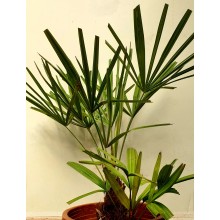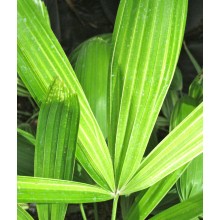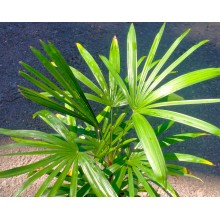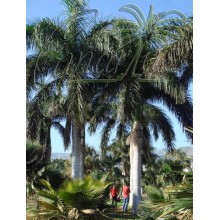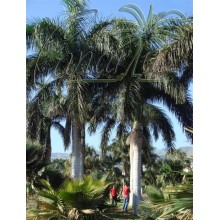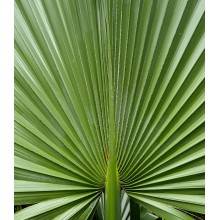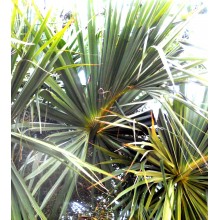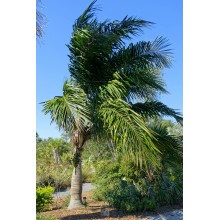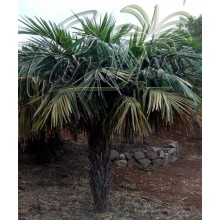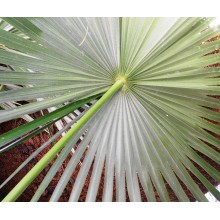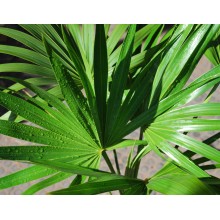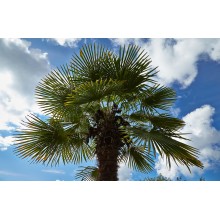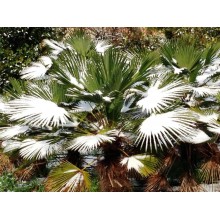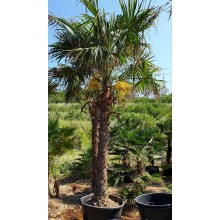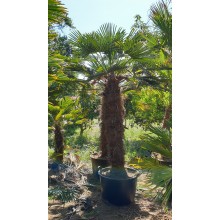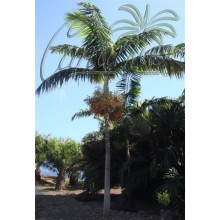Palmeras Hay 101 productos.

La familia de las palmeras, Arecaceae o Palmae, incluye cerca de 2.400 especies, nativas de climas cálidos del mundo, que van desde las delicadas especies tropicales a las palmeras resistentes al frío. Algunas palmas se pueden plantar al aire libre en Europa Central y aguantan fuertes heladas, muy por debajo de los -10 ºC (14 F). Los residentes en los países mediterráneos pueden cultivar un mayor número de especies en el exterior. Algunos cultivadores en la costa sur de Europa están criando colecciones de palmeras al aire libre que incluyen más de 100 especies.
Canarius sólo le enviará palmeras robustas, que se cultivaron en macetas pequeñas para reducir los costos de envío y problemas de preparación. Por ello, trasplántelas a macetas más grandes poco después de recibir el paquete. Esté preparado para darles lo mejor. Algunas palmeras pueden resistir nevadas, algunas pueden vivir en el interior o en macetas, y algunas son muy tropicales. Sólo tiene que elegir una que pueda prosperar en sus condiciones.
¿Qué palmeras pueden crecer en su área? Lea nuestra lista de palmeras resistente al frío para Europa. Visite el blog de Canarius y aprenda más acerca de nuestras palmeras. Verá fotos de los viveros: diferentes tipos de palmeras de Nueva Zelanda, Palmas botella con raíces de calidad superior.
-
Ptychosperma pullenii
Ptychosperma pullenii
Small or Mid- sized palm from Papua, with red new leaves, which are very elegant, with drooping segments, blunt at the tip as fishtails. It is very adaptable to pot cultivation.
44,20 € -
Ravenea rivularis
Ravenea rivularis
Popular feather palm native to river borders of Southern Madagascar, easily grown in the Mediterranean.
53,00 € -
Rhapidophyllum hystrix
Rhapidophyllum hystrix
The needle palm is the cold-hardiest of all palms. It is a clumping, short fan palm, with fibrous trunks, armed with long black spines. Leaves are dark green and glossy .
72,00 € -
Rhapidophyllum hystrix - Specimen
Rhapidophyllum hystrix - Specimen
8 years old, branched. h= 80 cm - Son h= 35 cm. The needle palm is the cold-hardiest of all palms. It is a clumping, short fan palm, with fibrous trunks, armed with long dark spines. Leaves are dark green and glossy.
288,00 € -
Rhapis excelsa cv. Koban Nishiki - Variegated
Rhapis excelsa cv. Koban Nishiki - Variegated
Clustering dwarf bamboo-like palm suitable as a house plant. Rhapis robusta is a new dwarf Rhapis from wet forests of southern China. The variegated clone of Rhapis Koban is different from most Variegated Rhapis. Its shorter leaves show no variegated stripes, while they boost a diffuse white tone reminiscent of Aspidistra Asa Ahi.
56,00 € -
Roystonea regia - LARGE
Roystonea regia - LARGE
The height of these cuban royal palms is about 2 m, rootbound in pots, with bases of 5-8 cm. We will cut or bend the leaves to a total height of 90 cm and it will resprout back in about 2 months, taller than before !
61,00 € -
Roystonea regia - Palmera Real Cubana
Roystonea regia - Palmera Real Cubana
h= 40-60 cm - Cont. 12 cm. The Cuban Royal Palm is one of the most beautiful of all palms. Native to the savannas and open forests of Cuba and surrounding territories.
43,50 € -
Sabal minor
Sabal minor
This is the smallest species in the genus Sabal and one of the cold-hardiest. It is native to deciduous forests in the SE U.S.A.
31,80 € -
Sabal yapa - Large
Sabal yapa - Large
h= 30-60 cm - Cont. 22 cm. Caribbean Sabal palm with grey-blue leaves with a bright cream-yellow costa. Juveniles have very wide segments, while adult palms have deeply split blades with thin segments. This palm can take short light frosts. It is a bit more hardy than the similar species Sabal mauritiiformis.
44,20 € -
Syagrus amara
Syagrus amara
This solitary palm is a very elegant tree with dark green arching leaves and a ringed trunk with a wide base. It does well in windy coastal conditions. Syagrus amara is the only Syagrus native to the Caribbean Islands and not to South America and has the largest seeds in the genus,
42,50 € -
Syagrus schizophylla - Large
Syagrus schizophylla - Large
Small-sized Syagrus palm , with glossy feather leaves with stiff, leathery segments. Tolerant of neglect, and light frosts. It is suitable to indoor and pot colture.
40,00 € -
Thrinax radiata
Thrinax radiata
Small sized ornamental palm from the Caribbean shores, with rounded fans of glossy leaves. It is very eay to grow and despite its tropical origin, it can stand cool temperatures (with no frost).
72,00 € -
Trachycarpus fortunei
Trachycarpus fortunei
The most popular cold-hardy palm of all times. This species will grow outdoors with little effort almost anywhere in Europe.
38,20 € -
Trachycarpus fortunei 'Wagnerianus'
Trachycarpus fortunei 'Wagnerianus'
This palm is a best seller in Europe. It is a small frost hardy palm with small and stiff fan leaves - only about 60 cm across. It is not known in the wild, only in cultivation, because it is compact cultivar of Trachycarpus fortunei, selected in China by Japanese horticolturists. It can take snow and frost, surviving to -15 C or -25 C, depending on local...
68,00 € -
Trachycarpus latisectus - ADULT! 195cm trunk
Trachycarpus latisectus - ADULT! 195cm trunk
Trachycarpus latisectus is one of the most attractive palms in this frost-hardy genus. Its leaves have exceptionally wide segments and a thick, ringed trunk, coated with reddish-brown fibers when young. We offer some fantastic tall adult specimes which are seldom found in Europe.
948,00 € -
Trachycarpus wagnerianus ADULT! - 175 cm trunk
Trachycarpus wagnerianus ADULT! - 175 cm trunk
This palm is a best seller in Europe. It is a small frost hardy palm with small and stiff fan leaves - only about 60 cm across. It is not known in the wild, only in cultivation, because it is compact cultivar of Trachycarpus fortunei, selected in China by Japanese horticolturists. It can take snow and frost, surviving to -15 C or -25 C, depending on local...
538,00 € -
Trithrinax brasiliensis
Trithrinax brasiliensis
Beautiful palm from "colder" Brazil, with flat fan leaves and long spiny leaf sheaths.
19,20 € 24,00 €¡Precio rebajado! -
Veitchia joannis
Veitchia joannis
A beauty of nature! This tall, elegant veitchia palm is native to to Fiji, and Tonga Islands. It is fast, beautiful, elegant, plumose, with showy red fruits.
19,30 €
En estos momentos tenemos pocos productos en esta categoría Palmeras
















